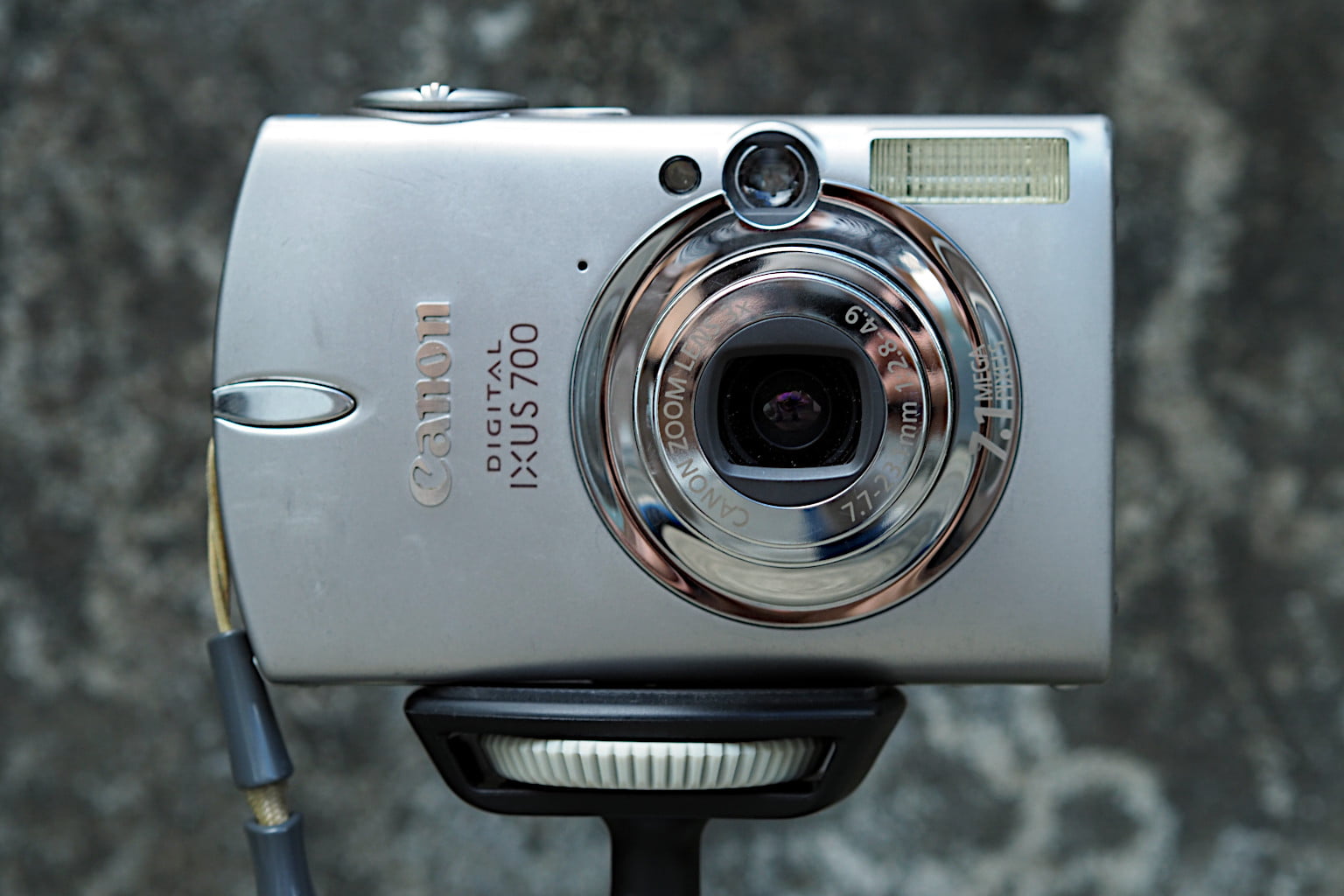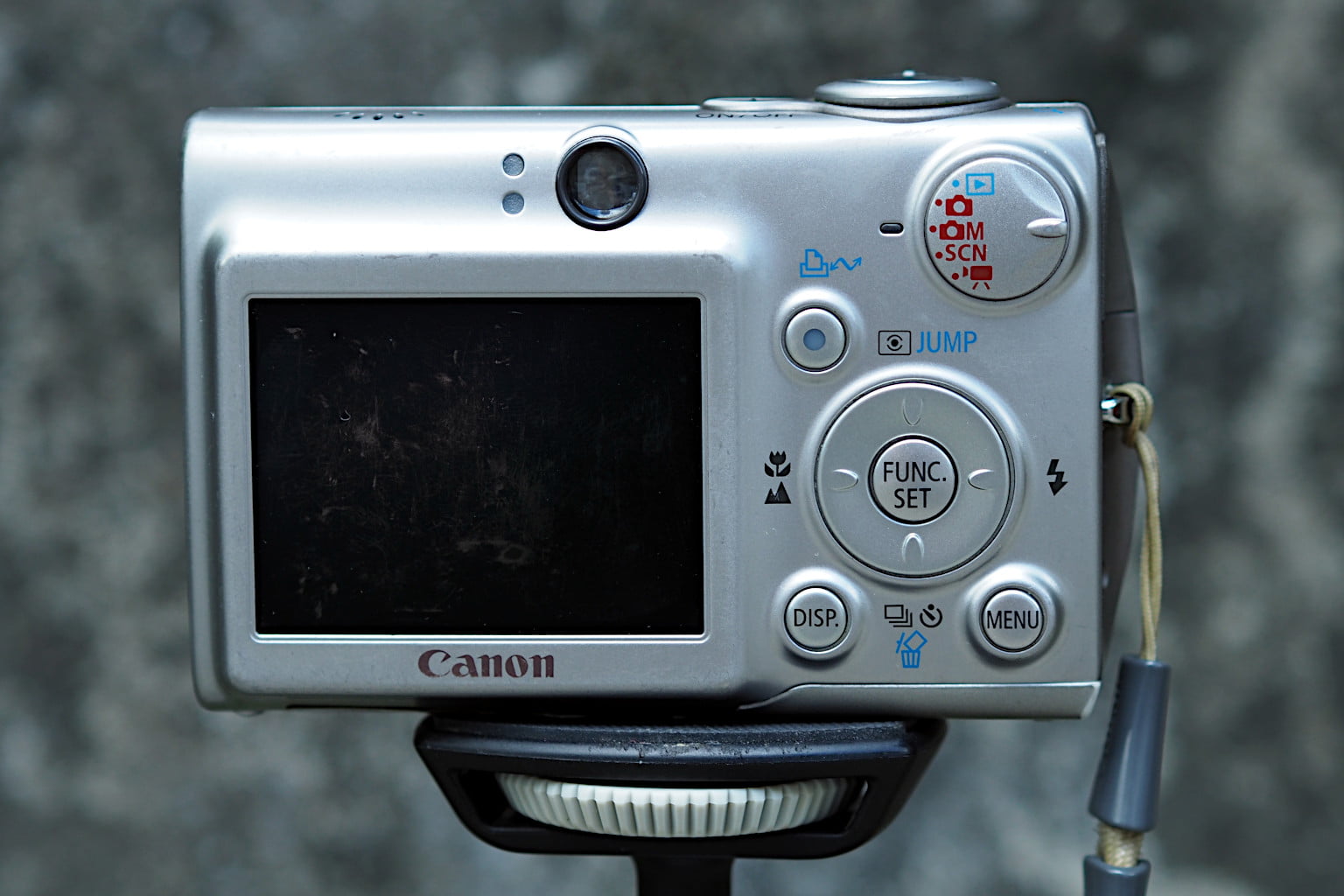A few weeks ago, while organizing my photography equipment, I stumbled upon my old Canon Digital IXUS 700. I couldn’t help but wonder if the camera was still usable today and if its image quality could hold up to modern standards. Released by Canon in February 2005, the IXUS 700 was one of the first compact point-and-shoot cameras with a 7-megapixel (MP) sensor. I bought it the same year in Germany for around 400 Euros, primarily as a compact travel camera. This was also the moment I ventured into digital photography. At the time, I was still using a film SLR and was hesitant to switch to digital due to the high costs of new camera systems, the relatively poor image quality, and the constant upgrades to image sensors that quickly rendered cameras obsolete.

A 7 MP resolution may not sound impressive in 2019, especially when even basic smartphones have cameras with much higher resolutions. However, in 2005, it was a big deal—particularly for a compact camera. Most compact cameras at the time had 5 MP sensors, while entry-level DSLRs typically ranged from 6 to 8 MP, and professional DSLRs offered resolutions between 12 and 18 MP.
In 2005, compact cameras had a solid place in the market. Smartphones hadn’t yet arrived, and the first iPhone was still two years away. Mobile phones of the time had cameras with sensor resolutions between 0.5 and 1.3 MP, and their image quality was nowhere near that of a digital camera.
The Digital IXUS 700 stood out for its stylish design, compact size, and useful features.
For more detailed specifications, you can find the camera listed on cnet.com, and there’s a review on techradar.com.
How Does the Camera Perform Today?
Even after years of not using the IXUS 700, I still find its design and compact size impressive. The metal body gives it a solid, weighty feel, making it quite heavy for a compact camera. It fits nicely in the hand and feels good to hold. The button layout is well thought out, allowing for easy one-handed operation.

Using the camera today, I’m still pleasantly surprised by the number of useful functions it offers. While it doesn’t have the full range of controls that a DSLR does, it provides several features that allow you to manage the image-taking process, such as different exposure modes (center-weighted, evaluative, and spot metering) and exposure compensation. However, as a point-and-shoot camera, it lacks the ability to manually select the aperture or shutter speed. If it had these features, the IXUS 700 would be an even more impressive camera.

I’m also impressed by how fast the camera operates. It boots up quickly, focuses rapidly, and writes to the memory card without delay. Even by today’s standards, the camera remains user-friendly and efficient.

As for image quality, it’s surprisingly decent. The photos are still suitable for websites and social media. However, the small sensor and poor ISO performance of the time show their limitations, particularly in low light. Even in well-lit scenes, shadows can exhibit some noise. It’s no surprise that the camera’s maximum ISO setting is only 400. The lens produces good sharpness, though it seems to vary depending on the focal length and aperture chosen by the camera. Some images are very sharp, while others can appear slightly soft. The color reproduction is natural, though colors can look a bit dull in poor lighting.

Video quality is not great, but that’s to be expected from a camera of this era. It records video at a resolution of 640 x 480 pixels at 30 fps, which was acceptable at the time. I made a test video but encountered issues editing it. The camera records in AVI format, which isn’t supported by Davinci Resolve, so I used Handbrake to convert the files to MP4 before editing. I’m not sure if the video quality would have been different if I had used the original AVI files, but at this point, it probably doesn’t matter.
Conclusions
The Canon Digital IXUS 700 is now almost 15 years old, yet it still functions well. The images it produces are still usable for websites or social media, and with careful shooting and some post-processing, the photos don’t necessarily look like they were taken with a 15-year-old digital camera. While the camera can still be useful today, it’s easily outperformed by any modern smartphone. However, if you’re after a true early 2000s vintage digital look, this camera could be a valuable tool.
All example photos are straight out of the camera with no post-processing, only downscaled to fit this blog.







Enjoyed this article? You can get early access to my maps, blog posts, and exclusive content by becoming a supporter on Ko-fi. I also share updates and insights on Facebook, post photography and snapshots on Instagram (@eyes_on_taiwan), and showcase maps and Taiwan data on Instagram (@taiwan.maps.dataviz). You’ll also find me on Threads and Bluesky, where I share new maps and links to blog articles. Looking forward to connecting with you!
If you like this content and don’t want to miss new blog posts, consider subscribing to our newsletter!




i like the colours, and i guess, that’s because it has ccd sensor.
for some reason i tend to like ccd sensor colours, at least i believe i do.